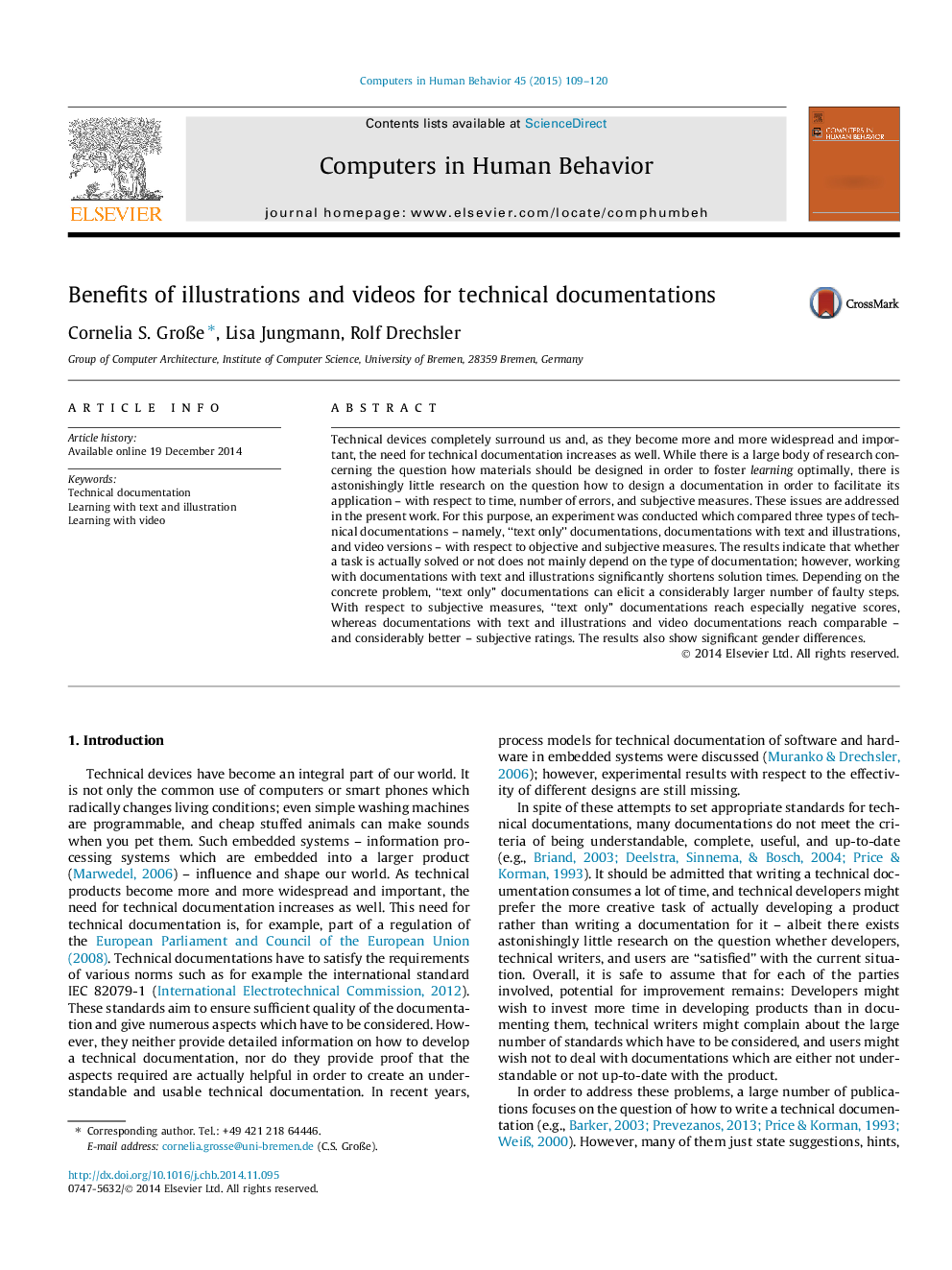| Article ID | Journal | Published Year | Pages | File Type |
|---|---|---|---|---|
| 350461 | Computers in Human Behavior | 2015 | 12 Pages |
•Technical documentations with text and illustrations shorten solution times.•Technical documentations with text and illustrations reduce the number of errors.•Documentations with illustrations or videos reach better subjective evaluations.•There are influences of gender on objective and subjective measures.
Technical devices completely surround us and, as they become more and more widespread and important, the need for technical documentation increases as well. While there is a large body of research concerning the question how materials should be designed in order to foster learning optimally, there is astonishingly little research on the question how to design a documentation in order to facilitate its application – with respect to time, number of errors, and subjective measures. These issues are addressed in the present work. For this purpose, an experiment was conducted which compared three types of technical documentations – namely, “text only” documentations, documentations with text and illustrations, and video versions – with respect to objective and subjective measures. The results indicate that whether a task is actually solved or not does not mainly depend on the type of documentation; however, working with documentations with text and illustrations significantly shortens solution times. Depending on the concrete problem, “text only” documentations can elicit a considerably larger number of faulty steps. With respect to subjective measures, “text only” documentations reach especially negative scores, whereas documentations with text and illustrations and video documentations reach comparable – and considerably better – subjective ratings. The results also show significant gender differences.
